With fewer customers and large ticket sizes, in the B2B space each customer and their feedback matter significantly more.
This means that B2B brands can leverage the Net Promoter Score (NPS) system to drive extraordinary growth results.
In this article, we want to show you how you (the B2B leader) can get the most out of their NPS program.
We know a lot about this subject. It’s our bread and butter.
Our Account Experience (AX) software and methodology have been ranked by Gartner as the #1 voice of customer (VoC) system for B2B for the last 3 consecutive years.
Here, we’ll share our secrets and show you how some B2B brands have benefited from B2B NPS. But first, we need to talk about why B2B NPS is such a unique beast.
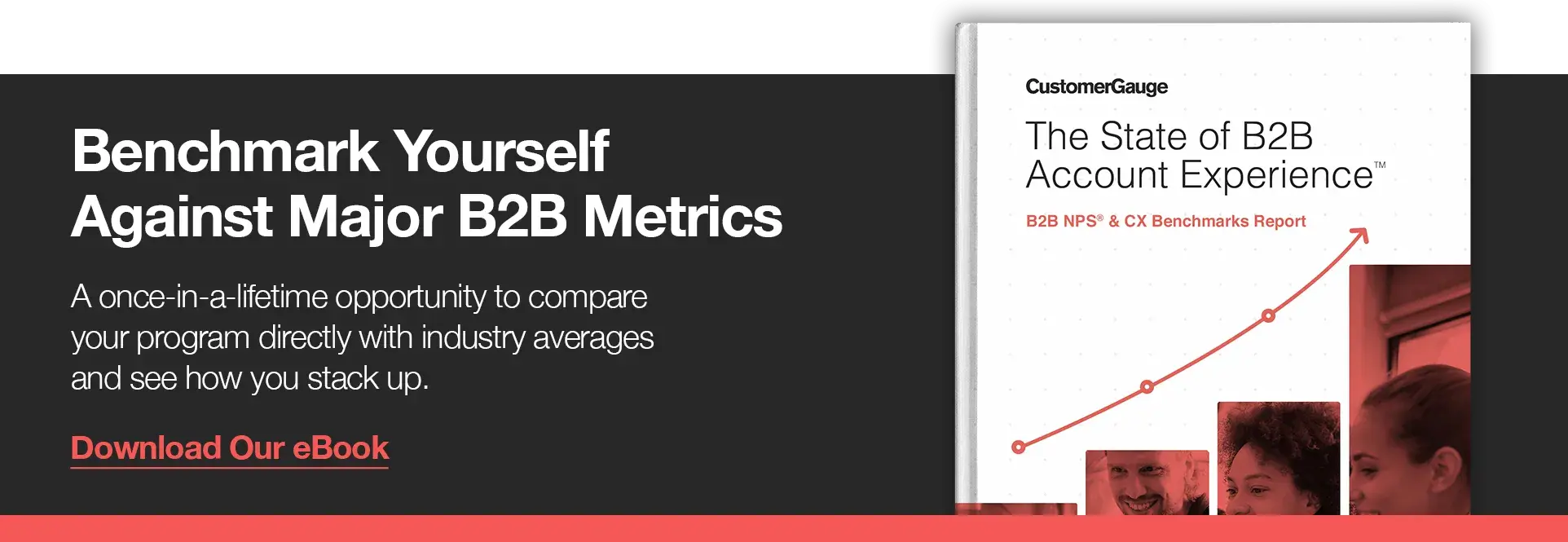
What Is NPS?
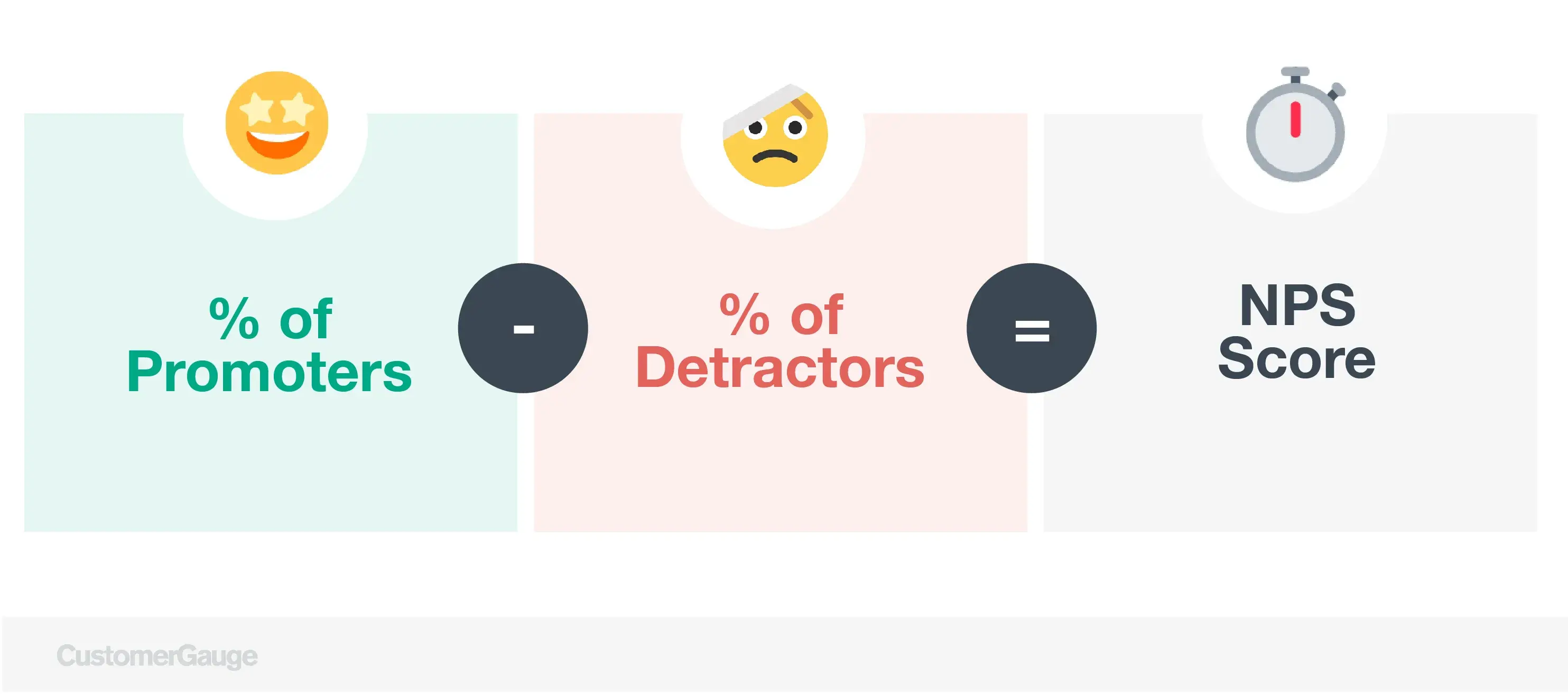
Net Promoter Score is the most widely-used system for businesses to monitor and improve their customer satisfaction. It’s so popular as a surveying tool because it is simple, scalable, and can secure much higher response rates than alternative surveying systems.
This fact allows brands to survey huge numbers of their customers easily. In B2B, it lets companies effortlessly gauge the sentiments of many different individuals within each of their client accounts.
The Net Promoter Score identifies the likelihood of a customer to recommend a brand as the most effective predictor of that brand’s revenue growth.
The NPS survey uses a single question:
On a scale of 0-10, how likely are you to recommend our brand/product/service to a friend or colleague?
From this single question, you can understand the likelihood of churn, referrals, and higher lifetime value.
Ultimately, that’s the real power of NPS. While it can be helpful simply to identify your promoters, passive customers, and detractors, linking your NPS to your revenue data is the game-changer.
Monetization of NPS is critical to the Account Experience methodology (we'll deep dive into this later), which is core to how B2B brands can leverage NPS to drive real results.
How Is the Net Promoter Score Different in B2B?
While it uses the same principles and techniques, NPS is not the same in B2B as it is in B2C.
In fact, with different customer touchpoints, different products and services, and different business models, CXM strategies in every different industry will likely apply NPS principles in different ways.
Let’s think about what makes B2B NPS programs unique:
B2B brands tend to have mixed revenues from customers. Many B2C brands have broad loyalty segments with fairly standard payment plans. In B2B, though, different customers can be worth a lot more to your business. Your NPS program should make sure all accounts are covered, and not just look at the NPS score itself. Otherwise, your highest value customer could have not replied, and be secretly unhappy—so, survey enough of the right people.
B2B has more customer touchpoints. In B2C, every step in the customer journey is typically performed by the same individual: the customer. But in B2B, you’re likely to be engaging with different people within the same customer account. And you’ll need to survey as many of these individuals as you can—More advice on multi-stakeholder surveying is on page 31.
B2B businesses have to work harder to maintain loyalty. According to McKinsey, CX ratings are consistently higher in B2C customers than they are in B2B. Similarly, research by Bain & Company found that 68% of B2B executives feel that customers are less loyal than they used to be.
B2B brands tend to have less visibility over their customer experience. A recent study by Accenture found that only 28% of B2B leaders had an influence over their CX. While they may think it’s a priority, something is holding their NPS programs back.
They have a greater need for technical support. With greater complexity and lower performance than B2C brands, B2B requires more sophisticated tools to get reliable NPS results.
One thing this tells us is that if NPS is not adapted to the B2B or B2B2C use case, its results will be limited. You must survey multiple stakeholders, connect account revenue with NPS scores, and close the loop with customers to show them you’re listening and are taking action to improve their experience.
Does NPS Work for B2B?
Yes, NPS works for B2B. Although it works a little differently, it should be even more valuable than in B2C contexts.
Why? Because when each customer is worth so much more, saving large accounts from churning is possibly mission critical.
NPS is the most effective way to do just that. All of the NPS benefits that you would expect from B2C are just as relevant in B2B too:
It’s simple, scalable, and delivers immediate insight. Conventional customer satisfaction surveys can be long-winded, convoluted, and can suffer from a low response rate. NPS performs so well—for B2B and B2C—because it’s straightforward and fast for both you and your customers.
It provides actionable insights. With customer churn among B2B brands on the rise, you need survey responses that are easy to understand and to act on. NPS delivers this, allowing you to identify root causes, solve customer problems, and drive revenue.
It’s really flexible. B2B or B2C, large businesses or small, NPS can deliver for everyone. But it can also be used to gauge the success of individual customer touchpoints or the quality of your CX in general.
It gives you clarity on how your CX impacts your bottom line. As many as 65% of B2B brands don’t know how their customer experience affects their revenue. With an effective B2B NPS system—such as Account Experience—this is an insight that becomes easy.
But there are good reasons why NPS might be a more powerful tool for B2B than for B2C.
B2B brands can get a higher response rate. Bain & Company, for example, recommends that B2B companies should aim for a 60% response rate to their NPS surveys. In comparison, consumer-focused brands will typically struggle to ever reach 50%.
That means more meaningful feedback. The higher your NPS response rate, the more reliable and actionable the system becomes.
You’ll be better able to close the loop. NPS is seriously limited if you’re simply asking questions and failing to respond. But in B2B NPS, it’s much easier to close the loop and deliver value for both you and your customers. Ultimately, that’s what an effective NPS system is all about.
So, does NPS work for B2B? It does indeed.
Let's look at how:
The Monetized Net Promoter System for B2B
The first thing we need to clarify is what the lingo means. Here are some quick definitions:
Monetized Net Promoter: The first B2B NPS system approach built by CustomerGauge (it later was extended to become Account Experience). The approach focused on taking traditional Net Promoter activities (measure feedback + close the loop) and adding a layer of monetization. This made it easy for brands to drive revenue with NPS—by linking CX data to revenue, they could identify retention drivers and opportunities for upsell/referral.
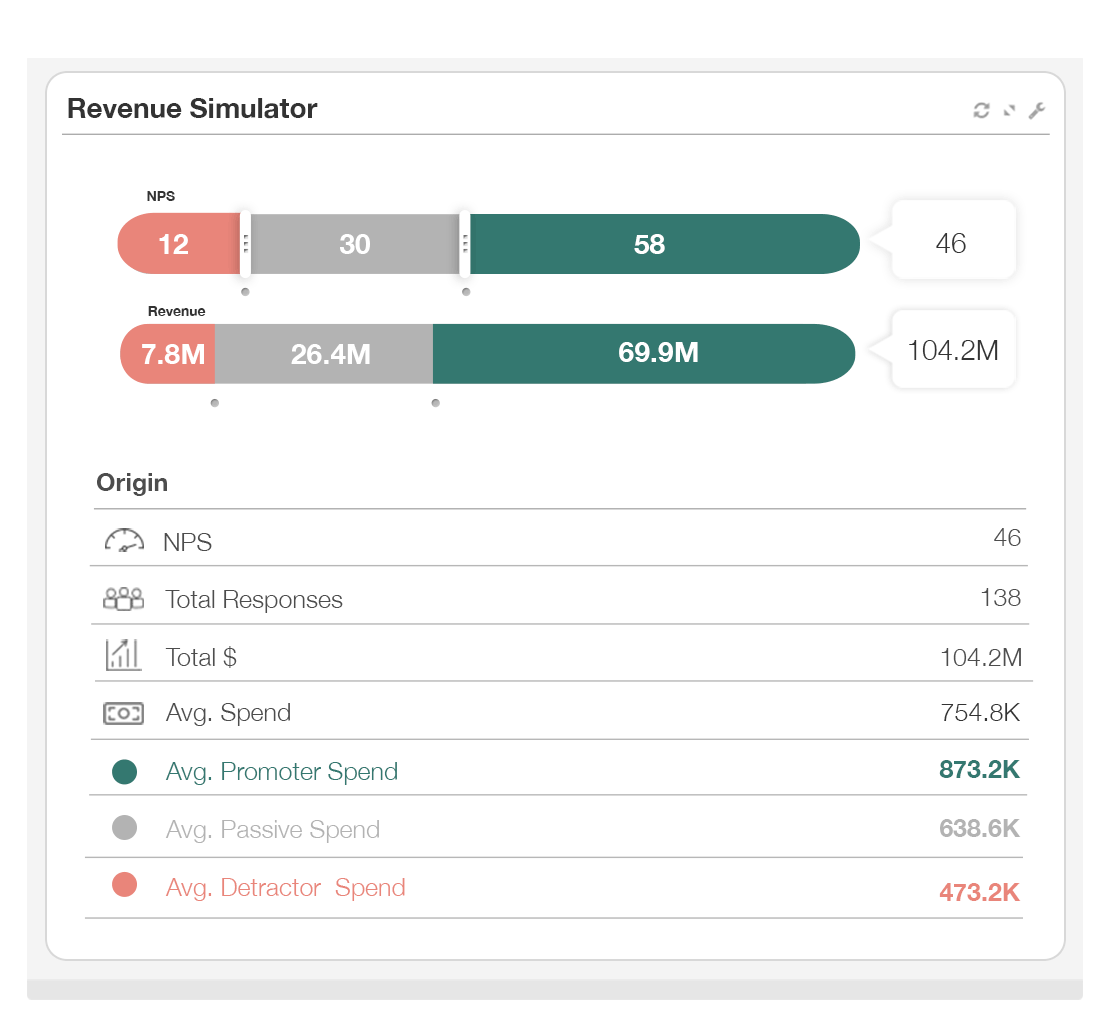
Account Experience (AX): AX is the next generation of CX management for B2B organizations. It combines feedback management, monetization, and account-based methodologies. AX includes monetized NPS, but it also adapts NPS to fit complex accounts with multiple, hierarchical stakeholders and brings in signals from other touchpoints rather than only leveraging NPS as a churn signal. Read from page 26 here to deep dive AX.
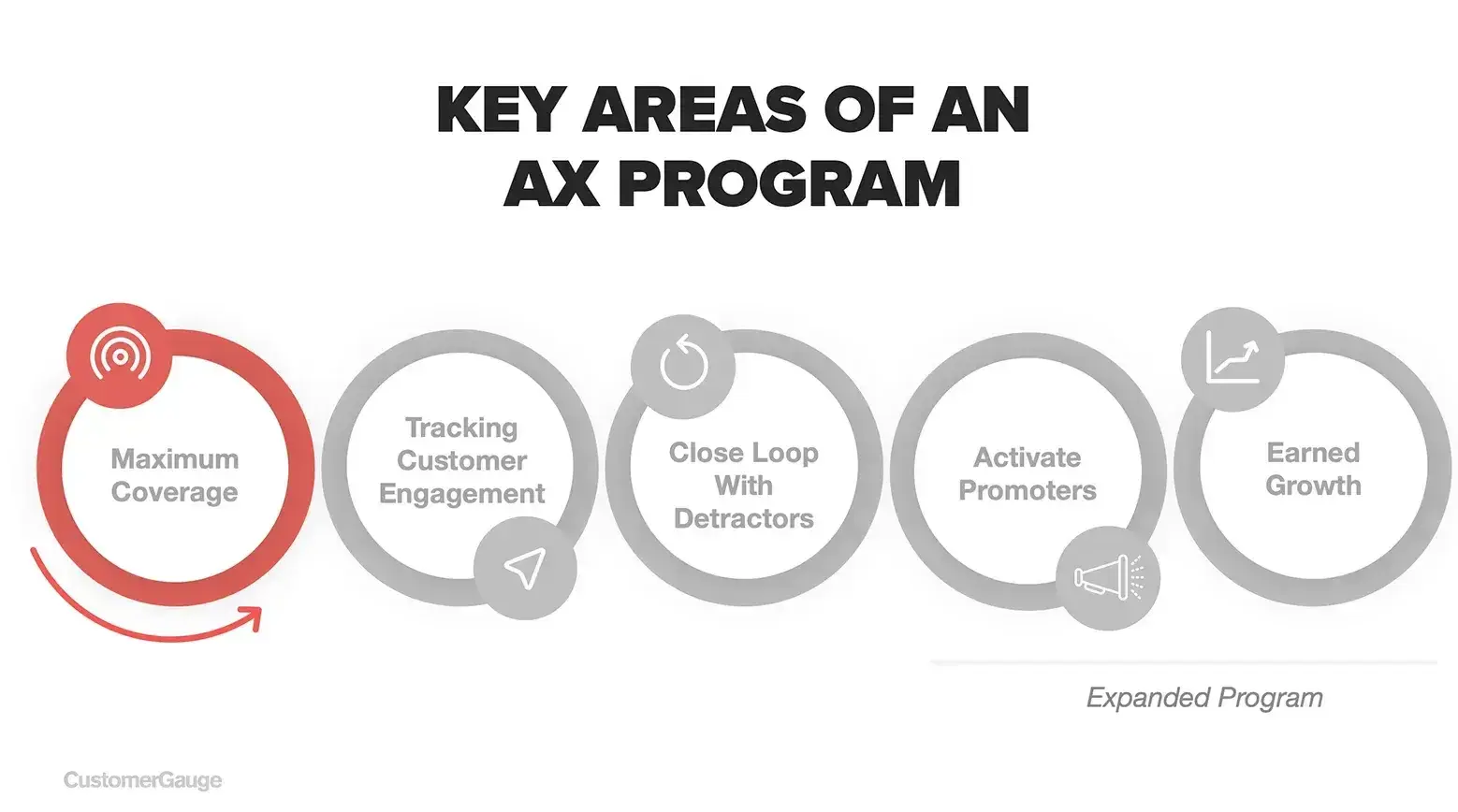
Both methodologies are specially developed to make NPS work for B2B brands and are proven to be highly effective at not only increasing NPS scores, but also driving the metrics that matter: churn, referrals, and upsell.
Look at the competitive advantage it brings vs typical NPS for B2B:
1. Higher NPS scores on every percentile
Discover: 4 Ways to Answer 'What is a good NPS score?'
2. Higher retention rates when you have multiple contacts in each account with higher frequency (core AX principles)
Download our full CX and AX benchmarking report here to learn how to improve your retention rates.
Getting Monetized NPS right is the first step to moving toward Account Experience methodology.
It may seem complicated to set up, but it's not. Account Experience NPS software and our team automate the entire thing—the shift typically takes a couple of months maximum and the upside is enormous.
You can put Monetized NPS into practice in three simple steps: Measure, Act, and Monetize & Grow.
1. Measure
The first part of your Monetized Net Promoter System will be the measurement. This is the moment when you survey your customers and gauge their sentiment with the NPS question.
But be aware: For B2B brands, the questions you ask—and the medium through which you ask them—will have a serious impact on the quality of results you receive. For example, we recommend that you:
Survey every contact in your account every quarter. This way, our research shows you’ll see a significant increase in retention.
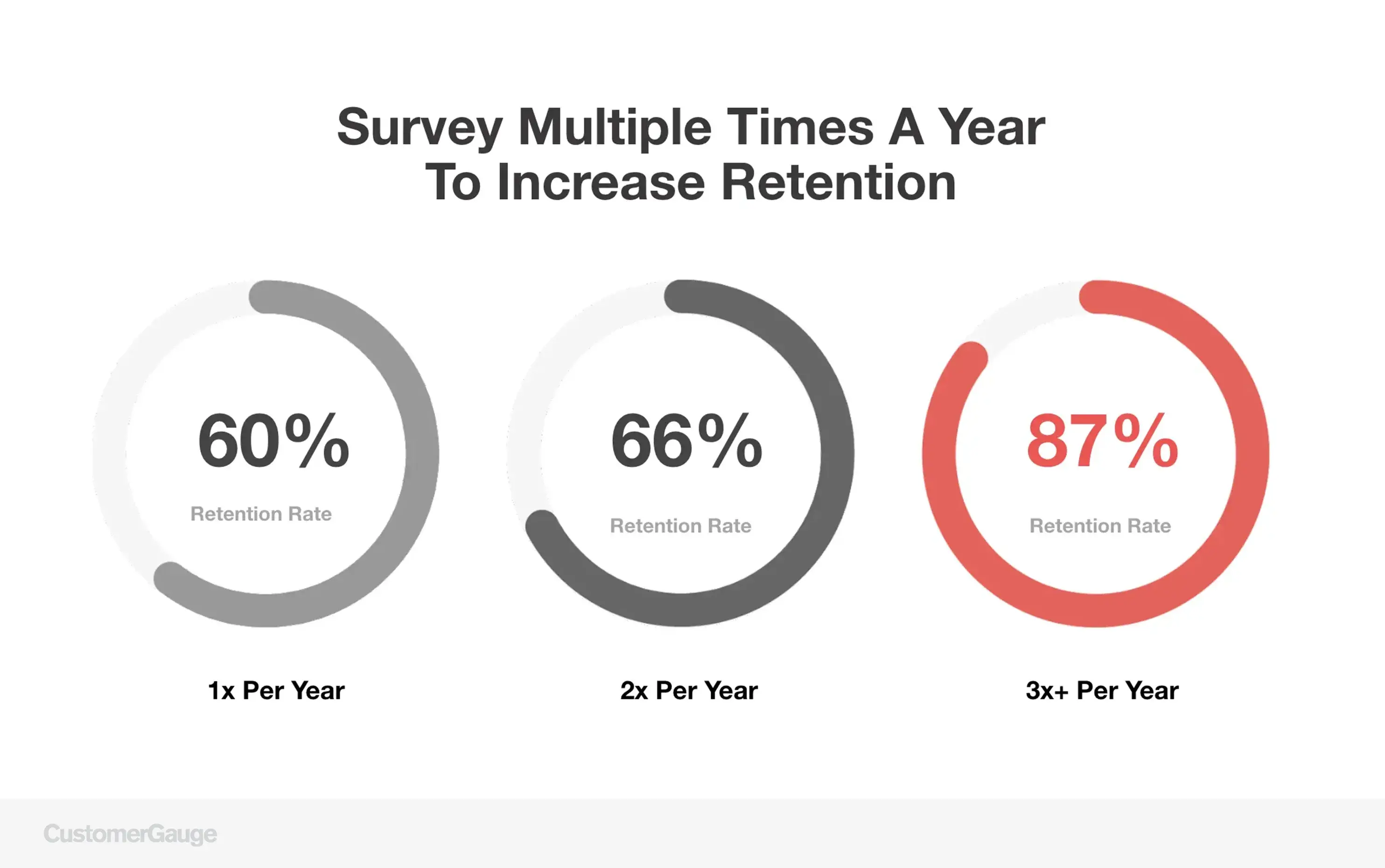
Choose your medium wisely. Phone surveys typically receive higher response rates than email surveys. However, with B2B accounts, targeting business email addresses is a reliable option.
Don’t overwhelm your accounts with questions. Asking between 2 and 6 questions in your NPS survey is the sweet spot between optimizing your results and improving response rates.
Maximize coverage. The number of people in each account that respond to your surveys doesn’t just impact your response rate. We found that it boosts retention too.
Focus on response rates: Higher response rates directly correlate with higher NPS scores. All feedback is an opportunity to improve and it also helps you identify gaps in customer health.

Read more: 16 NPS survey best practices.
2. Act
The second part of the Monetized Net Promoter framework is action. In practice, this means closing the loop.
Closing the loop means reaching out to your NPS respondents to tell them how you’ve responded to their feedback. It’s no exaggeration to say that closing the loop is the whole point in your CX program.
However, many businesses don’t bother. According to Gartner, while 95% of companies run CX surveys, only 10% use this feedback to change their business processes. And only 5% tell their customers what they’ve done.
But closing the loop improves your response rates, reduces churn, and shows your customers you care. In B2B brands, every person within your organization should be prepared to close the loop—from the CEO to your frontline staff.
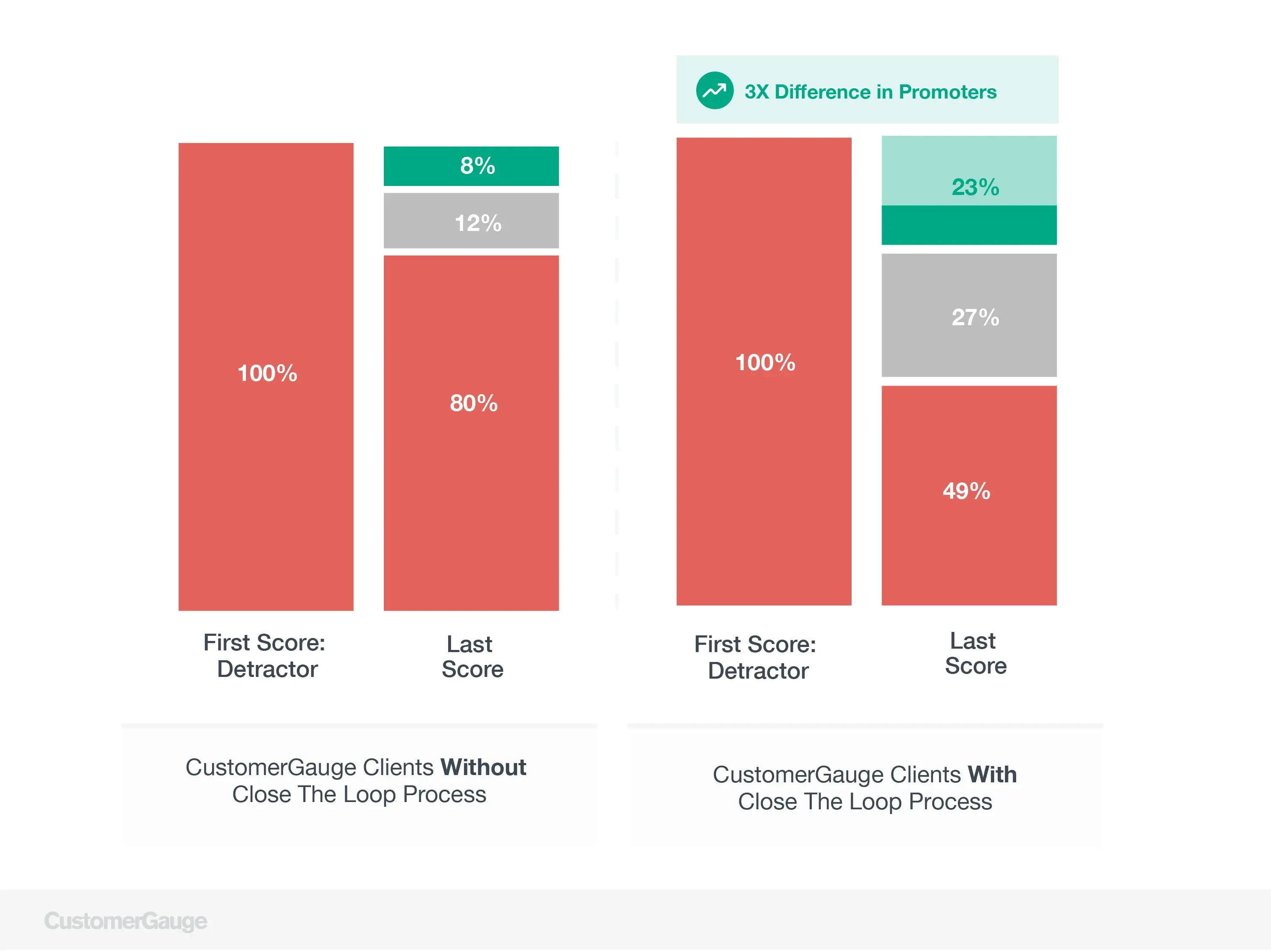
Read more in our expert guide to closing the loop on feedback.
3. Monetize and Grow
At CustomerGauge, we encourage all of our clients to focus on the final part of their Monetized NPS system. Unless you monetize, you won’t see the opportunities that NPS offers for business growth.
Our data shows most companies don’t know the financial impact of CX drivers (how then do you know which issues to fix first?):

This is why monetization is key to growth—prioritization and clarity on ROI of new CX projects.
Monetization means you:
Know the value of your customers. Not all B2B accounts are worth the same. Identifying which of your clients are worth the most will help you identify where to put your resources in the future.
Understand churn risk. Monetizing helps you gain visibility on which accounts are most likely to churn—and the amount of revenue at risk.
Prove the ROI of your CX program. Frustratingly, there remains doubt in some brands about the real value of your CX program’s impact. By monetizing your NPS program, you’ll be able to put a dollar figure on your customer experience efforts.
Of course, NPS helps you grow too. By identifying your promoters, NPS enables you to see who is most likely to respond well to upselling and referral programs.
When 80% of your profits come from 20% of your customers, your promoters might just be your main source of growth.
B2B NPS Case Studies: How Account Experience Has Delivered for Our Clients
We’ve supported hundreds of B2B brands to grow through their NPS programs.
But don’t just take our word for it. Here are four B2B brands that have benefited from Account Experience.
SingleHop, a cloud hosting provider, was a young company with exceptionally high growth, that wanted to keep sales staff up-to-date with how their customers were feeling. They called in CustomerGauge to help.
With our support, the brand’s NPS score quickly moved from +44 to +57. Typically, an improvement of 10 NPS correlates with a 3.2% increase in upsell revenue. But even better, SingleHop’s improvements in customer experience powered a 50% bump in retention.
Alchemista. In 2019, the catering brand, Alchemista, suddenly lost its biggest client—which accounted for 20% of its revenue. Six months into the program, they were shocked to receive a dismissal out of the blue.
But now the company boasts a 100% retention rate. What turned things around? Alchemista came to CustomerGauge, knowing we were leaders in NPS for B2B brands.
“Onboarding CustomerGauge has had the highest ROI of anything I've ever done at my company," says Christine Marcus, Alchemista’s CEO.
Find out more here: How Alchemista Went From Losing Their Biggest Customer to 100% Retention
- SmartBear. Finally, SmartBear proves the value of tying your CX program to your bottom line. From beginning an NPS program in 2017 from scratch, the B2B company went on to build an incredible revenue-building CX machine. By September 2018, they had achieved:
Increased referral close rates from 30% to 47%
Brought in $6 million of the referral revenue
Identified customers at risk of churn and achieved a saving rate of 60%.
- Wajax. Canada’s longest-standing and most diversified industrial products and services providers started with a clean slate in building their customer experience. With Customergauge and tying revenue to NPS, they discovered their promoters were worth 2X that of detractors.
- This piece of data were their most critical rally and call to get employees on board with furthering their CX education.
Hear from Justin Warren, Senior Vice President of Industrial Parts and Engineered Repair Services Business, who is behind the CX journey:
At CustomerGauge, we can help your B2B enterprise achieve the same results.

